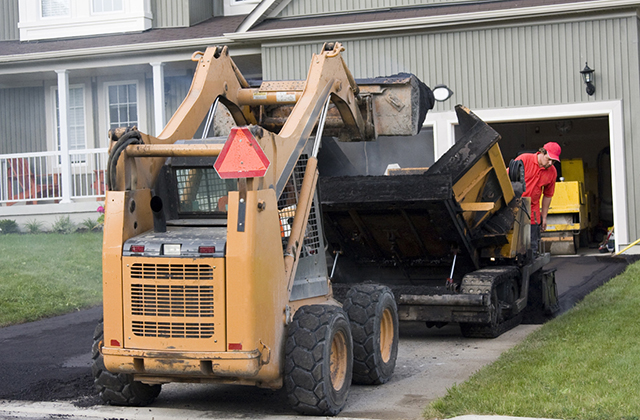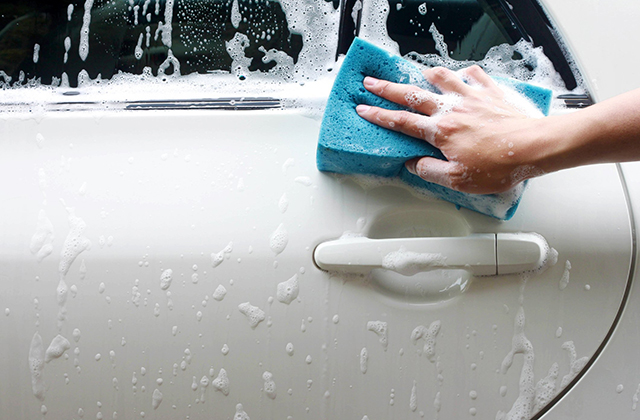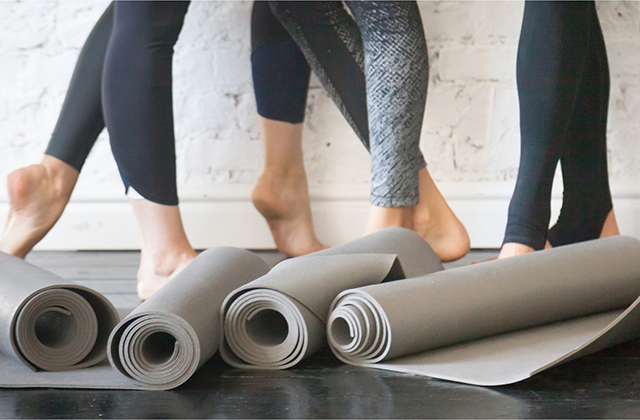In this series, we’ve gone over how to green everything from car trips and job searches to camping expeditions and wardrobes. But when all is said and done, it boils down to one thing: trash! Wherever you are, whatever you are doing, trash will most likely be a part of it. You go out to eat – you make trash. You make dinner at home – you make trash. You get ready for work – you make trash. See the trend? Having trouble keeping up with your family’s garbage output has now a solution with rubbish removal Northern Beaches Sydney.
So, we are taking it back to the beginning. Start right in your own home, and see how green your trash can get. You could become an expert and change the world as we know it!
1. Get Audited!
Don’t worry, we’re not talking about your taxes.
Think back to what you learned in seventh grade biology about the discovery process. The first step in the scientific method (trash is, after all, a very technical thing) is to ask questions about something you observe in your environment. Since you are reading this, you must already be aware of the fact that your trash is in need of a makeover, so we think it’s safe to move directly to step two: research.
Though this isn’t the most pleasant job, a trash audit is a necessary step to really getting a grasp on what you currently throw out, and more importantly, what you can save from the trashcan. The audit itself is simple, just follow these easy steps:
Pick a time period – A week is a good place to start.
Get everyone on board – If they live in your house and they make trash, they are involved, so catch ’em up to speed.
Throw stuff away – Go about your normal routine, and throw away what you usually do. It is important that you be honest with yourself and not try to be on your “best behavior.” Remember, you are trying to get an accurate measurement of your waste output.
Weigh in – If you can, weigh your trash. Each time you take a trash bag out of the house, plop it on the scale. This way you can have a baseline for comparison (sort of like “before” and “after” photos when you’re starting a new workout program). Though you will visually be able to see your trash dwindle, the satisfaction of cold, hard facts is the icing on the cake.
Put on some gloves – Check daily to see what you threw away that could have been recycled, composted, reused or avoided. This part is the “eeewwww” moment – we are talking about trash here. But, by doing it daily, it wont be as bad. Don’t be deterred by what you find. Remember your mission. You can do it!
Get graphical – Make a list, chart, pie graph, power point…whatever you want. Just write down your findings, and use those findings to make a plan. What can you recycle that you are currently tossing in the trash? What can be composted? What can be reused and, in turn, what didn’t need to be there in the first place?
2. Recycle – Know the rules
The U.S. EPA estimates that 75 percent of our waste is recyclable. This is great news, especially since the American Forest and Paper Association (AF&PA) states that 87 percent of the U.S. population, or 268 million people, have access to curbside or drop-off recycling programs. This means that many materials can be recycled and programs are, for the most part, accessible.
So what’s the holdup? For many people, it is knowing exactly what goes in the recycling bin and what to do with stuff that doesn’t. Here’s a checklist:
Check with your local government to get a list of what materials you can and cannot put in your curbside bin.
For everything that can’t be put in your curbside bin, check Earth911’s recycling database for drop-off locations near you. This includes items such as paint, batteries, CFLs and pesticides.
Use mail-back and store drop-off programs. This option is great for electronics and automotive waste. Most auto parts stores and mechanics will take used motor oil and old tires, especially if they do the work for you. As far as electronics are concerned, many products such as cell phones can be mailed to manufactures or traded in for money. Drop-off programs, such as Best Buy’s and the EPA’s eCycling Progam, are making electronic recycling more accessible for consumers across the nation.
Trade-in programs can often be an option when you are purchasing new items from that same company. Computers are a great example of this. In fact, by planning ahead while purchasing your computer, you can build the cost of proper disposal right in from the get-go, saving you money and time in the long run.
3. Compost Your Scraps
According to the U.S. EPA, every American throws away an average of 1.3 pounds of food scraps daily. In addition to this, yard trimmings and food waste combined make up 24 percent of our nation’s municipal solid waste (MSW) stream. Even if half of this can be diverted and recycled through composting, our daily trash levels could start to decrease.
Starting a compost pile is easier than you think. From your kitchen, to your backyard, to a worm bin, composting can make a huge dent in your waste and produce a rich product you can use to help maintain your yard, give to friends or even sell at the local farmer’s market or garden center.
4. Reuse – You Already Have It
The act of reuse can have a huge impact on your waste production. Reuse is simply finding a second (third, tenth or hundredth) use for a product to prolong its usable life. Reuse is also an important step after you’ve reduced, but before you are ready to recycle. The most common forms of reuse to minimize household waste are:
Using reusable bags while out shopping – no more paper or plastic
Purchasing a reusable water bottle
Getting a reusable mug for your morning trips to the coffee shop
Washing out an empty pasta sauce jar – no Tupperware will ever be as good as “Its-Already-Paid-For-So-Why-Not-Use-It” ware
Think before you get out something new to use or purchase a one-hit-wonder. Get in the habit of asking yourself, “how can I make this moment a trash-free one?”
5. Spread the Word
All this knowledge is great to have, if you’re the only one making trash. But if you have roommates, or live with loved ones, you need to make sure they are playing by the same rules. To make it easy, post signs around the trash can, recycle bin and compost pile until everyone gets the hang of it, and list the dos and don’ts. Also, designate a space in your garage or shed for those harder-to-recycle items, and make sure to let everyone know when you are doing a drop-off.
6. Shop for Better Trash
When at the store, check out a product’s trash profile before you purchase it. If you can choose between a few options, pick the one that has the least amount of waste associated with it, such as a product using less packaging or packaging made from recyclable materials.
Also, buy in bulk and bring your own reusable containers to the store to hold these items. Make sure to know the weight of the container when it’s empty, so they can subtract that from the price when you’re checking out. If you need help with this, just ask the customer service desk at your local store. Once you know the weight, just write in on the container and it will be easier to reference in the future. Buying in bulk not only saves waste, but money.
Even better, keep an eye out for these guys:
Recycled-content products are made from materials that would otherwise have been discarded. That means these products are made totally or partially from recycled material, such as aluminum cans or newspaper. Also, if a product is labeled “recycled content,” the material might have come from excess or damaged items generated during normal manufacturing processes – not collected through a local recycling program.
Post-consumer content is a material that has served its intended use and is being reused in a different product. “Post-consumer” also indicates that the material is not from the manufacturing process, but from a finished product that has already been used.
Recyclable products can be collected and remanufactured into new products after they’ve been used. These products do not necessarily contain recycled materials and only benefit the environment if people recycle them after use. You can also take this one step further and think about what products recycle better than others. For example, glass is an easy material to recycle that doesn’t downgrade. If you can, choose glass over plastic (which downgrades once recycled).
7. Green Your Accessories
Regardless of how much you can save from the garbage can, you are still going to need it for some things. Since it is a household staple, make sure you keep it aligned with your lifestyle. There are lots of products to keep your green trash momentum going:
Think outside the can – With some of the new designs available, you gain flexibility in reusing plastic bags from your shopping trips. This design, from DCI, reuses wood and clothes pins for your trashy needs. Use this concept for inspiration and make your own collection unit.
Keep your trash in…trash – Buying recycled trash bags is a simple switch to make and helps close the loop in the recycling process.
Clean it up – According to eHow.com, “undiluted distilled white vinegar (5 percent solution) – the kind you can buy in the supermarket – kills 99 percent of bacteria, 82 percent of mold, and 80 percent of germs (viruses).” Who knew? Why purchase harsh chemicals to clean those cans, when some simple salad dressing can do the trick? If the smell bothers you, add some essential oils or keep the area well ventilated until it dries. Another natural option is tea tree oil. This leaf, from an Australian plant, contains terpenoids which have antiseptic and antifungal properties.
8. Stop Buying!
It can be as simple as this: If you don’t buy waste, you can’t make waste. For example, a group in San Francisco set out to buy nothing new for an entire year. While that might not work for everyone, the essence of it is definitely applicable in different-sized doses. Do you really need another (fill in the blank)?
Do you already have something at home that will work? Do your friends or family have something you can use or borrow? Even if it ends up that you need to buy it anyway, just getting into the habit of thinking about alternatives is a step in the right direction. Be open-minded and see where it leads you!








